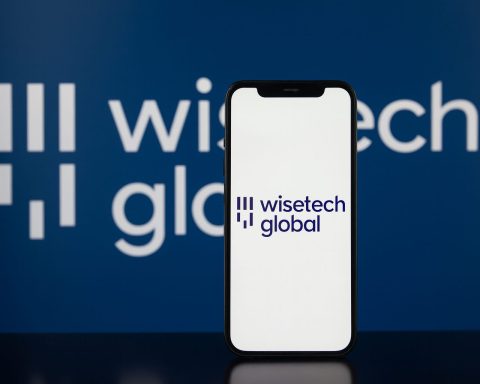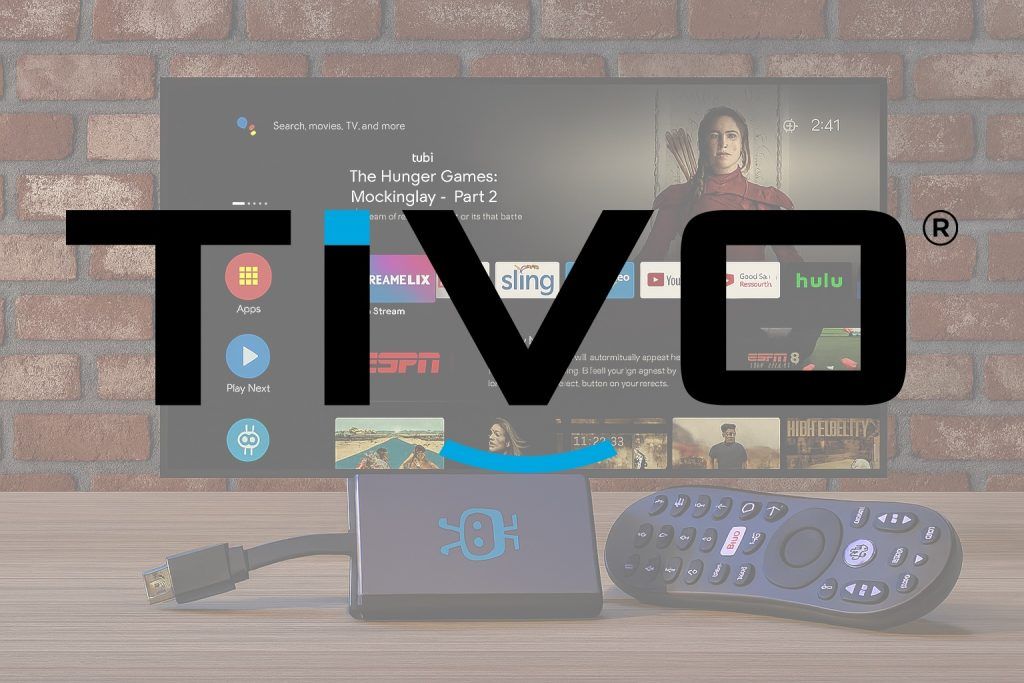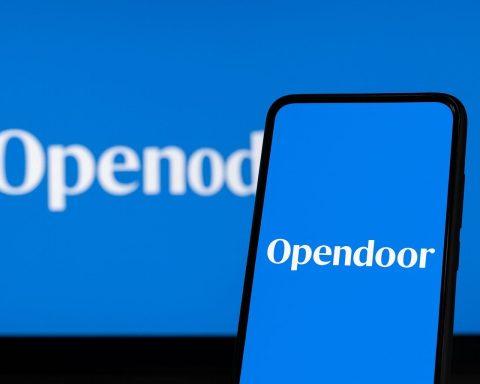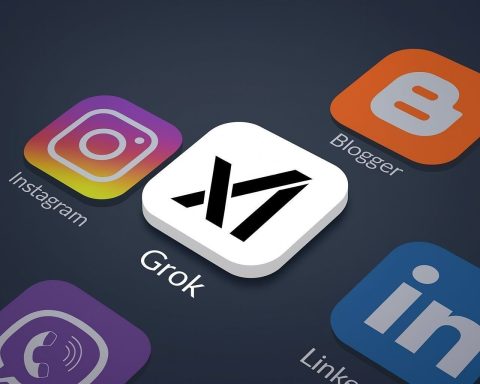- Nuance Communications, acquired by Microsoft in 2022 for about $19.7 billion, pioneered ambient clinical intelligence and Dragon Medical used by more than 550,000 physicians.
- In 2020 Nuance launched Dragon Ambient eXperience (DAX) to securely capture doctor‑patient conversations and automatically generate clinical documentation.
- In March 2023 Nuance announced DAX Express, the first fully AI‑automated clinical documentation app combining ambient AI with OpenAI’s GPT‑4.
- By mid‑2023 DAX Express was being integrated into Epic’s EHR software as a “co‑pilot” for clinicians.
- In 2025 Microsoft unveiled Dragon Copilot, a unified voice AI that merges Dragon Medical One with DAX ambient listening and new GPT‑based features.
- As of early 2025, DAX processes over 3 million patient conversations per month across more than 600 healthcare organizations, with clinicians saving about 5 minutes per encounter, 70% reporting reduced burnout, and 93% of patients noting a better experience.
- Ambient listening spans consumer tech and cars, with smart speakers like Amazon Echo and Google Home using wake‑word detection and devices typically housing six to eight microphones.
- Regulatory and privacy frameworks include HIPAA compliance for U.S. healthcare tools, GDPR data minimization in Europe, and 11 states with all‑party consent laws for recording.
- Industry responses include opt‑in voice data sharing, transparency reports, on‑device processing, and features like Apple’s on‑device processing and Amazon’s “delete what I just said” command.
- Public attitudes show about 60% of Americans would feel uncomfortable if a doctor relied on AI in care, with younger people generally more comfortable and calls for clearer privacy labels growing.
Imagine a world where your doctor’s computer automatically writes your visit notes, or your car adjusts the music just by hearing you speak. This is the promise of ambient listening – technology that allows devices to continuously “hear” and respond to us. From hospital exam rooms to smart homes, ambient listening is quickly becoming part of daily life, bringing exciting benefits alongside serious privacy questions. In this report, we’ll explore what ambient listening is, how it evolved, Nuance Communications’ pioneering role in healthcare, other industries adopting always-on listening, the tech behind it, its benefits, and the ethical and regulatory landscape shaping its future.
What Is Ambient Listening? The Evolution of Always-On Ears
Ambient listening (also called always-on listening or voice triggering) refers to technology that enables devices to continuously monitor their environment for spoken cues or keywords [1]. In practice, this means a smart device’s microphones are always “ears open,” waiting for a trigger phrase (like “Hey Alexa” or “Hey Siri”) to activate and carry out commands [2]. This concept grew out of advances in voice recognition and AI: as these technologies improved over the 2000s, it became possible to create devices that interpret human speech in real time [3].
The evolution of ambient listening accelerated in the 2010s. Early voice assistants required a button press or explicit prompt to listen; now, thanks to far-field microphones and on-device AI chips, smart speakers like Amazon Echo and Google Home constantly listen for their wake words, enabling seamless hands-free interaction [4]. By the late 2010s, always-listening voice AI had spread from phones to appliances – by 2018 even refrigerators, ovens, and light switches were being built with microphones and voice assistants inside [5] [6]. Ambient listening has thus moved from a novelty to a mainstream feature in consumer tech. In parallel, specialized fields began exploring it: the concept was introduced into healthcare workflows in the late 2010s, and by 2020 researchers were studying its impact on reducing clinicians’ clerical burden [7].
Nuance Communications and Ambient Clinical Intelligence in Healthcare
When it comes to ambient listening in healthcare, Nuance Communications is a key pioneer. Nuance (acquired by Microsoft in 2022 for ~$19.7 billion) is a leader in conversational AI and ambient intelligence across industries, especially health care [8]. Nuance’s speech recognition software (notably Dragon Medical, used by over 550,000 physicians [9]) has long helped doctors dictate notes. Building on this, Nuance introduced its ambient clinical intelligence (ACI) platform to let AI “listen” in the exam room. In 2020, Nuance launched the Dragon Ambient eXperience (DAX) – an ambient AI system that securely captures doctor-patient conversations and automatically generates clinical documentation, essentially allowing the “clinical documentation [to] write itself” [10]. This DAX system works alongside electronic health records (EHRs) to create an “ambient exam room” where the physician can focus on the patient while the AI handles note-taking [11]. Developed with Microsoft’s partnership, DAX leverages Nuance’s decades of expertise in medical speech recognition and the cloud AI capabilities of Microsoft to transcribe and contextualize the conversation in real time [12].
The impact of Nuance’s ambient listening solution has been significant. By alleviating the mountain of paperwork, DAX directly targets what the World Medical Association dubbed a “pandemic of physician burnout” from excessive documentation [13]. Early deployments showed striking results: at Nebraska Medicine and other hospitals, using DAX led to faster patient throughput, 88% higher provider satisfaction with documentation, and over 90% patient consent rates for AI-assisted note-taking [14]. “It is essential to develop technology that empowers clinicians so they can get back to what they love… We’ve delivered an unobtrusive solution that is as present and available as the light in the exam room,” said Nuance CTO Joe Petro upon introducing DAX [15]. In other words, the AI is ambient in the background – “as present… as the light” – enabling doctors and patients to converse naturally.
Nuance’s ambient clinical intelligence has continually advanced. In March 2023, Nuance (as a Microsoft company) announced DAX Express, described as the first fully AI-automated clinical documentation app combining Nuance’s ambient AI with the power of OpenAI’s GPT-4 model [16] [17]. This generative AI-enhanced system can produce a draft of a patient note in seconds after a visit, ready for the clinician’s review [18]. By mid-2023, DAX Express was being integrated into Epic’s widely used EHR software as a “co-pilot” for clinicians, streamlining workflow inside the systems doctors already use [19] [20]. And in 2025, Microsoft unveiled Dragon Copilot, a unified voice AI assistant that merges Nuance’s dictation (Dragon Medical One) with DAX’s ambient listening and new GPT-based features [21]. “With Dragon Copilot, we are introducing the first unified voice AI experience… drawing on our trusted, decades-long expertise that has consistently enhanced provider wellness,” said Microsoft Health VP Joe Petro (formerly of Nuance) [22]. These developments highlight how Nuance’s ambient listening tools have become central to cutting-edge healthcare AI. According to Microsoft, the ambient AI tech is already at scale – in early 2025, DAX was helping process over 3 million patient conversations per month across 600+ healthcare organizations [23]. Clinicians report saving about 5 minutes per encounter on average, with 70% saying it reduces burnout and 93% of patients reporting a better experience [24] [25].
Real-world feedback from hospitals has been enthusiastic. “We’ve seen first-hand how ambient AI has transformed the provider-patient experience… DAX is already reducing what used to be hours of documentation to mere seconds — it’s truly life-changing,” says Josh Wilda, Chief Digital & Information Officer at University of Michigan Health-West [26] [27]. Patients notice the difference too: at Ochsner Health, which rolled out ambient listening documentation, “the patients love it… My favorite quote on that is, ‘I got my doctor back,’” reported Dr. Denise Basow of Ochsner, noting that patients appreciate seeing their doctors focus on them instead of a computer screen [28]. By reducing “pajama time” (after-hours charting) for physicians by ~15–20% [29] [30], ambient clinical AI like Nuance’s is directly tackling burnout and helping restore the human touch in healthcare.
Ambient Listening Beyond Healthcare: Consumer Tech, Cars, and Security
Ambient listening isn’t just a healthcare phenomenon – it’s spreading across consumer technology, automotive systems, and security applications as well:
- Smart Speakers & Home Devices: The most familiar ambient listeners are the Alexa, Google Assistant, and Siri devices in our living rooms and kitchens. These smart home voice assistants are always poised to hear a command – whether it’s to play music, adjust the thermostat, or answer a trivia question. By continuously monitoring for a wake word, devices like Amazon Echo or Google Home let users control lights, appliances, and information with simple voice requests [31]. This hands-free convenience can be transformative. For instance, if your hands are full of groceries, you can just call out, “Hey Google, turn on the kitchen lights,” instead of fumbling for a switch. Ambient listening makes technology more accessible and intuitive, especially for those who cannot easily use screens or buttons [32] [33]. Voice-controlled interfaces have been a boon for individuals with disabilities or limited mobility, empowering users to interact with tech through speech alone.
- Automotive Systems: Modern cars increasingly act like smart speakers on wheels. Many new vehicles come with built-in voice assistants or integrate with Apple’s Siri or Google Assistant. Ambient listening in cars allows drivers to control GPS navigation, make calls, send texts, or adjust entertainment without taking hands off the wheel [34]. Saying “Hey Mercedes, I’m cold” can prompt some cars to increase the temperature, for example. This not only adds convenience but also improves safety by minimizing distractions [35]. In-car ambient listening can also help with emergencies – systems can be always listening for crash detection keywords or voice-activated SOS calls. As vehicles get smarter (and eventually autonomous), constant voice dialogue with the car may become the norm.
- Security and Surveillance: Ambient listening is being harnessed to keep us safe in both home and public settings. In home security, smart alarm systems and cameras use always-on mics to detect unusual sounds like glass breaking or a smoke alarm. For example, Amazon’s Alexa Guard feature can listen for a window break-in or alarm while you’re away and alert you. Baby monitors and elder-care devices similarly listen for cries, falls, or distress signals continuously. On a city-wide scale, acoustic gunshot detection systems (like ShotSpotter) deploy networks of microphones that passively listen for gunshots to pinpoint their location and notify police [36]. (These systems are controversial, however – civil liberties groups note they raise surveillance and accuracy concerns [37].) Retailers have even tested ambient sound analysis in stores to gauge customer sentiment or detect theft. In all these cases, ambient listening acts as an extra set of ears, potentially catching critical sounds (a broken window, a cry for help, a gunshot) that humans might miss.
- Other Applications: Ambient “ears” are finding creative new uses regularly. Wearables like smart earbuds or voice-activated glasses listen for user commands on the go. Some health and wellness apps use a device’s microphone to passively monitor breathing or coughing for signs of illness. Research projects have explored using smart speakers to detect early signs of conditions (for instance, changes in voice that might signal a cold or even cognitive decline) [38]. And in the workplace, voice-based virtual assistants sit in meeting rooms, transcribing discussions and setting action items automatically when they “hear” tasks being assigned. As AI improves, any context where listening can provide value – from kitchens to construction sites – is a candidate for ambient voice technology.
How Ambient Listening Works: The Tech Behind the Ears
It might seem like magic that a gadget can sit silently until it hears “Hey Siri,” or that an AI “scribe” can listen to a complex medical dialogue and produce useful notes. In reality, multiple layers of technology make ambient listening possible:
- Microphones and Wake-Word Detection: Ambient listening devices typically use an array of sensitive microphones (often 6–8 mics on smart speakers) to constantly capture sound from all directions. They run low-power wake-word detection algorithms locally. This means the device’s built-in chip is always analyzing the audio for a specific trigger phrase, but not transmitting or fully processing everything it hears until that phrase is detected [39]. For example, an Amazon Echo is always listening in the technical sense, but it’s only buffering a couple seconds of audio and waits to detect “Alexa” before it starts recording or sending any data to the cloud [40]. Companies design these systems so that nothing beyond the wake word is saved or acted on (barring mistakes), to balance functionality and privacy. In practice, however, false triggers do occur – e.g. a fragment of conversation that sounds like “Alexa” can cause the device to start streaming audio up inadvertently [41].
- Continuous Recording (for Certain Apps): In some ambient listening scenarios – notably ambient clinical intelligence tools – the system is intended to record and analyze entire conversations, not just brief commands. For instance, Nuance’s DAX does not require a “wake word” once it’s activated for a patient visit; it uses always-on audio capture via a mounted smartphone or ceiling mic to passively record the full dialogue between doctor and patient [42]. This raw audio is handled according to strict consent and security protocols, given its sensitive nature. For both wake-word devices and full-conversation systems, manufacturers often include physical indicators (lights or chimes) to let people know when audio is being actively recorded and processed.
- Speech Recognition (ASR): Once active audio is captured, the first major task is Automatic Speech Recognition (ASR) – converting the spoken words into text in real time. Modern ASR employs advanced machine learning models trained on vast amounts of audio to achieve high accuracy. Ambient systems are tuned to handle natural, conversational speech (including ums, pauses, multiple speakers, and background noise). In the clinical setting, the ASR must even handle simultaneous speech by doctor and patient and medical jargon in noisy exam rooms [43]. The output is a transcript of everything said.
- Natural Language Processing and Understanding: The real power of ambient listening comes from understanding context, not just transcribing words. Here, Natural Language Processing (NLP) algorithms analyze the raw transcript to interpret meaning and intent. In a smart speaker, NLP helps determine that when you say “What’s the weather like?” you’re requesting a forecast, not literally asking for a definition of “weather.” In an ambient scribe, more complex NLP is used to extract key clinical information – symptoms, medications, diagnoses, doctor’s assessments, etc., from the conversation [44]. Advanced systems use speaker diarization (to tell which person said what) and clinical language models to figure out, for example, that “I’ve had a cough for two weeks” is the patient describing a symptom, whereas “Let’s start amoxicillin” is the doctor making a treatment plan. This step often involves AI models (including large language models) that can summarize and organize information. Nuance’s latest DAX Express, for instance, uses GPT-4 to assist in reasoning through the conversation and producing a concise summary note [45] [46].
- Edge vs Cloud Processing: Depending on the system, different parts of this pipeline may run on the device itself (edge) or on cloud servers. Consumer voice assistants typically do wake-word detection on the device (for quick response and privacy) and send the audio to the cloud for full speech recognition and NLP (since cloud servers can use bigger AI models). However, improvements mean even some speech recognition can happen on-device now (Apple’s recent iPhones process many Siri requests on the phone, for example). Healthcare ambient AI often uses a hybrid approach: initial transcription might happen on a local device or nearby server for speed, but then the data is encrypted and sent to a secure cloud service where powerful AI models compose the structured clinical note [47] [48]. All transmission of sensitive audio/text is usually end-to-end encrypted to protect privacy [49].
- Action and Integration: Finally, the system must do something useful with the interpreted command or content. A consumer voice assistant will execute the action (e.g. turning on a smart light or answering a question) and likely provide voice feedback (“OK, lights on”). An ambient clinical AI will generate a structured output – for example, a SOAP note (Subjective, Objective, Assessment, Plan format) – and automatically integrate it into the patient’s electronic health record for the doctor to review [50]. In Nuance’s workflow, within minutes of ending the appointment, the physician can see a draft note that the AI composed from the conversation, often including suggested billing codes or follow-up order details [51] [52]. The clinician then corrects any errors and signs off the final document. Importantly, these systems continuously learn and adapt: over time, the AI refines its understanding of a particular doctor’s speaking style and specialty terminology, improving accuracy with use [53].
All these technical pieces come together to create the illusion that our devices “understand” us. While challenges like misrecognition, accents, and distinguishing background voices remain, the technology has advanced to the point where in many cases it feels natural to simply talk to our environment and have it respond appropriately. As one developer put it, ambient listening transforms devices from passive gadgets into proactive, adaptive assistants – they move when we move, listen when we speak, and fade into the background when not needed [54].
Benefits and Use Cases of Ambient Listening Tech
Always-on listening AI can deliver tangible benefits across various settings. Here are some of the key advantages and use cases that have driven the rapid adoption of ambient listening:
- Relieving Workload & Burnout in Healthcare: In hospitals and clinics, ambient listening is tackling one of the biggest pain points – the crushing documentation workload on clinicians. By automating note-taking and administrative tasks, these tools free up doctors and nurses to spend more time caring for patients instead of typing. Studies show physicians often spend nearly two hours on EHR paperwork for every hour with patients [55] [56], contributing to burnout. Ambient AI scribes cut that ratio dramatically. For example, pilots at Stanford found two-thirds of doctors felt ambient listening saved them time and made note-taking faster, and virtually all found it easy to use [57]. “Ambient AI is poised to have a big impact in alleviating administrative burden, which is a significant driver of burnout,” says Punit Soni, CEO of Suki, another maker of clinical AI assistants [58]. By reducing after-hours charting and giving clinicians “their nights back,” these tools can improve providers’ work-life balance. Some even use the regained time to see more patients, boosting access to care [59] [60]. Hospitals also report that richer, AI-generated notes improve billing accuracy (capturing all the care provided) and help during audits [61] [62]. Ultimately, ambient clinical listening aims to let doctors be doctors again – fully present with the patient. As one physician exclaimed when the AI started handling notes: “I got my doctor back!” [63] – meaning the doctor could focus on the conversation instead of the computer.
- Enhancing Customer Convenience at Home: For consumers, the hands-free convenience of ambient listening is a major draw. It lets us control technology in a natural, seamless way. Need to set a timer while cooking, but your hands are messy? Just say the word. Want to play your favorite playlist while driving? Ask your car’s voice assistant. The ability to dictate messages, ask questions, or give commands on the fly makes daily routines easier. This is especially empowering for people with disabilities: voice interfaces allow those with visual impairments to get information without a screen, and those with limited mobility to operate devices without physical controls. “A voice interface can open the door for people who are blind by making it possible for them to better control their technology,” notes one accessibility guide [64]. In workplaces, ambient listening can boost productivity by letting professionals dictate notes or schedule meetings while their hands remain on other tasks [65] [66]. In short, always-listening assistants serve as personal aides, ready whenever you call – whether it’s scheduling a reminder while you’re rushing out the door, or turning off the lights from bed by just asking.
- Safety and Situational Awareness: Ambient listening technology can improve safety in subtle ways. In cars, voice control helps drivers keep eyes on the road – you can request directions or reply to a text without looking away or fumbling with buttons, reducing accident risk [67]. At home, an always-listening system can act as a guardian – for instance, a smart speaker that hears a smoke alarm or carbon monoxide detector can send an alert to your phone if you’re not home. Devices that monitor for specific sounds (a crash, a cry, a call for “help”) add a layer of security for elderly individuals living alone or patients in hospital rooms. In nursing settings, ambient listening tools are being tested to assist nurses by listening for patient needs – e.g. a system that notes if a patient says “I’m in pain” and alerts staff. Even in public, city deployments like gunshot detectors can speed emergency response by automatically identifying dangerous situations. Thus, ambient audio tech serves as a constant “ears on the ground” that can detect problems faster than human senses alone, potentially saving lives by enabling quicker interventions.
- New Insights and Contextual Services: Because ambient listening gathers a lot of data (with permission), it can unlock insights that were previously hard to capture. In healthcare, beyond documentation, the transcripts of patient visits (when safely analyzed) could be data-mined to identify care gaps or provide decision support – for example, reminding a doctor of guidelines if it “hears” a patient mention a symptom that needs follow-up. Nuance’s system already can suggest orders or populate billing codes based on the conversation [68] [69]. In customer service, an ambient listening platform in a call center could analyze tone and keywords in real time to guide an agent (or flag a supervisor if a call is escalating). In smart homes, future AI might use continuous listening to learn your household’s routines – e.g. recognizing that every evening you say you’re cold, and proactively adjusting the thermostat. Ambient listening combined with AI could even serve as a digital memory assistant, as researchers have suggested – capturing and indexing information you’ve spoken so you can query it later (imagine asking, “Voice assistant, what was the name of the restaurant John recommended to me last week?” and it actually recalling the conversation context). While these applications are nascent, they illustrate how having an always-on ear can lead to more context-aware, personalized services that adapt to our needs without us having to explicitly ask each time.
In summary, ambient listening AI has the potential to make technology more invisible and helpful. When done right, it “fades into the background, never interrupting, and steps in only when needed” [70] [71]. Clinicians get more quality time with patients (and less burnout), consumers get easier interactions and accessibility, and new classes of smart applications become feasible. Of course, these benefits are only realized if people trust the technology – which is why it’s critical to address the ethical and privacy concerns that ambient listening raises.
Ethical and Privacy Concerns: Big Ears, Big Questions
The idea of devices constantly listening to our speech understandably triggers concerns about privacy, consent, and surveillance. As ambient listening becomes widespread, both users and experts are asking hard questions: Who is hearing these recordings? How are they stored and used? Could we be inadvertently bugging ourselves? Several key concerns have emerged:
- Privacy and Data Security: The foremost worry is that always-listening devices may capture sensitive personal information without people fully realizing it. By design, these tools are “all ears,” which creates opportunities for misuse. “I find the idea of devices that are ‘always listening’ in our homes very troubling,” says cybersecurity expert Graham Cluley. “Fears would include that devices might be poorly secured and open to hacking, as well as the temptation for some firms to abuse the data they are collecting” [72]. In other words, a sloppy or malicious implementation of ambient listening could turn into a spy in your living room. Manufacturers have tried to mitigate these fears by building in protections – encrypting audio data, anonymizing it, and allowing users to mute or delete recordings [73]. Amazon Echoes, Google Homes, and similar gadgets usually have a physical mute button that cuts off the mic, giving users control when they want guaranteed privacy [74]. Despite this, incidents have shown privacy risks are not just theoretical. In one case, a Google Home Mini device was found to be recording everything it heard (due to a glitch) and uploading it to Google’s servers, until the issue was caught and fixed [75]. In another well-publicized example, Amazon and Google admitted in 2019 that they had teams of employees (or contractors) who listen to a small sample of anonymized voice assistant recordings to help improve the AI [76] [77]. Technically, users agreed to this in the terms of service (for “training” purposes), and the companies stressed only a tiny fraction of clips were reviewed by humans [78] [79]. Nonetheless, the revelation alarmed many people who assumed their private conversations weren’t being overheard by unknown staff. (Both companies have since added easier opt-outs and paused human reviews after public outcry [80].) These examples underline a crucial point: ambient data is sensitive, and mishandling it – whether via security breach, insider abuse, or unclear policies – can violate trust. Users often worry that these devices could be “spying” on them for advertising or other purposes. While Amazon, Google, and Apple all say their assistants do not listen to conversations except for wake words, the fact that they could, technically, has fueled plenty of urban legends (like people believing Facebook or Alexa is eavesdropping because they got a strangely apt ad). This gray area means companies have to work hard to prove their transparency and security in how voice data is used.
- Consent and Awareness: Another major ethical issue is ensuring that everyone being recorded by an ambient device has given informed consent. It’s one thing for you to choose a smart speaker in your home, but what about your houseguests who might not know it’s there? Or in a hospital, patients must be informed that an AI system will be listening to their visit with the doctor. In healthcare, strict rules are emerging around consent for ambient listening. Many hospitals using AI scribes have patients sign a detailed consent form explaining how the system works, what’s being recorded, how the data is stored, and when it’s deleted [81] [82]. Physicians are also advised to obtain a patient’s verbal consent at each visit before turning on the recorder, both to respect patient comfort and to comply with laws in U.S. states that require all-party consent to record conversations [83] [84]. For example, in California or Florida (two-party consent states), a doctor must not only inform but get agreement from the patient (and any family present) before using an ambient recording device, otherwise they could run afoul of wiretapping laws [85]. This can be tricky – how do you handle a scenario where a patient says they’re not comfortable with the AI? Providers must have alternatives (like reverting to manual notes or using the system only as dictation for the doctor after). In daily life, the consent issue is even murkier: there’s no pop-up disclaimer when you enter someone’s Alexa-equipped living room. Social norms are still evolving – some people announce, “Hey, just so you know, Alexa is in this room and might hear us.” But most probably do not. This raises ethical questions about second-hand surveillance: should owners of always-listening devices bear responsibility to inform others? What about workplaces installing smart assistants – do employees or customers need to be notified? These are largely unresolved, and regulations may eventually step in to mandate clearer disclosure when audio is being recorded.
- Misuse, Errors, and Bias: Beyond privacy, ambient AI systems pose other risks. Any AI that transcribes or interprets speech can make mistakes – hearing a medicine name incorrectly, or misunderstanding a voice command. If a clinical AI makes an error in a doctor’s note (say, missing a symptom that was mentioned), it could have patient safety implications. Who is responsible for such errors – the physician who signed off, or the tech provider? This is an active debate. There’s also potential for bias: speech recognition might perform worse on certain accents or dialects, meaning ambient tech could inadvertently work better for some groups than others. Ethicists caution that these systems need to be trained on diverse data and evaluated for bias to ensure equal performance. Another misuse fear is that always-on mics could be leveraged for surveillance or profiling – for instance, could an advertiser someday pay to know what TV show you often have on in the background, or could an authoritarian government demand access to smart-speaker data to monitor dissent? While speculative, these scenarios underscore why strong policy safeguards are important as the tech becomes ubiquitous.
- Surveillance Creep and Big Brother Fears: On a societal level, ambient listening raises the specter of eroding the boundaries of private spaces. When the NSA’s mass surveillance of phone and internet communications came to light in the 2010s, it alarmed the public; now, some worry that we’re voluntarily placing corporate (or hackable) listening devices all around us. Privacy advocates note that even if companies behave responsibly, the mere existence of an always-recording infrastructure is a tempting target for law enforcement and governments. In fact, there have been court cases where police sought or used data from Amazon Echo devices as evidence in investigations of crimes that occurred inside homes. This sets up new legal questions about digital privacy and warrants – is a voice recording from your kitchen akin to a phone call (protected by certain laws) or is it more like someone overhearing you talk? The laws haven’t fully caught up. For now, companies report that they respond to subpoenas when legally required, but often the data is not stored long or is encrypted. Amazon, for instance, fought a 2016 subpoena for Echo recordings in a murder case, citing First Amendment and privacy rights – though it eventually handed over the data with the owner’s consent. These highly charged issues highlight how ambient listening, despite its benefits, sits at a contentious intersection of technology and civil liberties.
In short, trust is the linchpin for ambient listening tech. Without robust privacy protections, transparent user controls, and respect for consent, the “ambient revolution” could stall due to public backlash. The good news is that these concerns are being taken seriously: healthcare organizations, for example, are proactively setting up data governance and AI ethics committees to oversee deployments [86] [87]. The focus is on ensuring that any gains in efficiency don’t come at the expense of patient privacy or autonomy. As JAMA Network authors Cohen et al. noted in a 2025 legal/ethical analysis, hospitals should establish clear protocols for when ambient listening is used, how patients are informed, and strict data retention policies to prevent misuse [88] [89]. Expect to see more such guidelines and possibly legislation to define the boundaries of always-listening tech.
Regulation and Responses: Navigating the New Landscape
Governments and companies alike are beginning to respond to the challenges posed by ambient listening. Because this technology blurs lines (it’s not quite a phone, not quite a traditional recording device, but something new), the regulatory framework is still catching up. Here’s how the landscape is shaping up:
- Healthcare Privacy Laws (HIPAA): In the United States, any solution that handles patients’ health information must comply with HIPAA (Health Insurance Portability and Accountability Act) privacy and security rules. Ambient clinical listening systems, by design, process spoken protected health information, so they squarely fall under HIPAA’s domain [90]. This means providers and vendors must implement rigorous safeguards: data encryption, access controls, audit logs, and business associate agreements governing any cloud processing. Any device or software recording patient information must be HIPAA-compliant [91] – for example, Nuance’s DAX operates within a secure, HIPAA-compliant cloud environment (Microsoft Azure) and does not store audio long-term beyond what is needed to generate the note. If an organization can’t ensure that level of protection, it shouldn’t use such a tool. So far, no major HIPAA breaches involving ambient AI have been publicized, but the potential is there (consider that a medical AI scribe could theoretically capture extremely sensitive revelations during a visit). Recognizing this, the industry norm is to purge or heavily protect raw audio recordings once transcribed. Insurers have recommended that clinics not retain full audio long-term, to minimize both privacy exposure and legal discoverability in malpractice cases [92] [93]. If a system doesn’t need to save the recording after producing the note, better to delete it. Vendors are also exploring on-device processing to keep data local when possible. Future updates to HIPAA or health IT standards may explicitly address such AI tools, but for now they are treated as an extension of existing electronic record systems, with the same duties to guard confidentiality.
- Data Protection (GDPR and beyond): In Europe, the GDPR (General Data Protection Regulation) imposes strict requirements that affect always-listening devices. GDPR mandates data minimization (only collect what’s necessary) and purpose limitation (only use data for the specific purpose consented to) [94]. This raises interesting questions: How do voice assistants reconcile needing to “hear” everything (to catch a wake word) with minimizing data? Companies have taken the stance that they only process ambient audio ephemerally, and only store or act on the data after the wake word – thus they are not “collecting” all the background chatter in a personally identifiable way. Still, EU regulators have scrutinized voice AIs; there have been investigations and some fines related to how voice data was used to train algorithms (Google and Amazon faced such inquiries in the late 2010s). GDPR also gives users rights like accessing or deleting their data, which Amazon and Google have had to implement for voice recordings (you can review and delete your Alexa voice logs, for instance). Looking ahead, the EU AI Act, a comprehensive AI regulation in the works, may classify certain AI uses (possibly including voice assistants or biometric voice analysis) as higher-risk, which would bring extra obligations. Additionally, European consumer groups have pressured companies to improve transparency – e.g. requiring a clear indicator when a device is actively recording, and easy ways to toggle the feature off.
- Surveillance and Wiretap Laws: In the U.S., there isn’t an overarching federal privacy law yet for ambient data, but existing wiretapping/eavesdropping laws can apply. As mentioned, 11 states have all-party consent laws for recording private conversations [95]. If an Alexa or similar device records a conversation between two people without both knowing, it could be argued as unlawful interception in those jurisdictions. However, whether smart assistants count as “recording” in the legal sense if they’re only listening locally until a wake word is an open question. So far, no major lawsuits have set a clear precedent. We did see a class-action suit in 2019 against Amazon for allegedly violating California’s wiretap law by recording kids without consent; Amazon argued Alexa wasn’t a “device for eavesdropping” under the law because it records only on wake word and with the primary user’s consent. The case spurred Amazon to add clearer parental consent mechanisms for child profiles. As voice tech spreads, we can expect some legal tests of how older statutes apply. Lawmakers have started paying attention: for example, some U.S. Senators have raised concerns over recordings and pushed the FTC to ensure companies aren’t unfairly deceiving consumers about always-listening features. On the flip side, law enforcement’s use of smart speaker data raises constitutional questions (Fourth Amendment search and seizure issues). Civil liberties groups like the ACLU warn that mass deployment of microphones could lead to new forms of surveillance if not curtailed by law [96]. It’s likely we’ll see more proposals at state or federal levels to set rules for consumer devices – such as requiring explicit labels on products with always-listening mics, or even hardware killswitches.
- Company Policies and Self-Regulation: The tech companies behind ambient listening are keenly aware that public trust is vital. After the backlash over human reviewers listening to voice assistant recordings, Amazon, Google, and Apple all made changes: they now prompt users to opt in for voice data sharing to improve AI, rather than opting everyone in by default [97] [98]. They also publish transparency reports and privacy whitepapers explaining how their voice AIs work. For instance, Apple touts that by default Siri uses a random identifier not tied to your Apple ID for recordings, and a lot of Siri processing is done on-device in newer iPhones (meaning less audio ever leaves the phone). Amazon introduced the command “Alexa, delete what I just said” or “…delete everything I said today” to give users easy control over their data. These are examples of industry self-regulation steps to address consumer worries. In healthcare, companies like Nuance and its rivals emphasize their compliance and ethical use commitments in marketing. Microsoft, which sells Nuance’s ambient tech as part of its Cloud for Healthcare, has an AI ethics committee and says it follows responsible AI principles (e.g. solutions are “designed for each healthcare use case” and tailored with safeguards [99]). On the whole, the industry trend is toward more user empowerment: providing on/off toggles, clear consent dialogs, and features like audio logs where you can see (and hear) what your device recorded. These help demystify the technology.
- Professional Guidelines: Various organizations are issuing guidelines for ambient AI. The American Medical Association (AMA) in 2023 called for a “whole-of-government” oversight approach to AI in healthcare, ensuring physicians are involved in setting safeguards [100] [101]. The AMA and others stress that usage must be transparent to both physicians and patients – no one should feel a “listening” AI is being snuck in without their knowledge [102]. Hospitals are creating internal policies: how long can we keep audio? Do we allow ambient devices in sensitive areas (like behavioral health therapy sessions) or not? These micro-level decisions will collectively shape norms. Internationally, bodies like the World Health Organization have begun analyzing AI ethics in healthcare, which includes scenarios like ambient listening. All these efforts point to an emerging consensus that ambient tech is not going away, so it must be deployed responsibly. As one health law expert put it, there’s a need to “balance innovation with protection” – leveraging AI’s benefits while upholding privacy rights and ethical standards [103] [104].
Expert Voices: Perspectives on Ambient Listening
Throughout the rise of ambient listening, many experts in technology, healthcare, and privacy have weighed in on its promise and pitfalls. Here are a few notable quotes and insights:
- Clinician Experience: “They definitely notice ambient listening — we get a lot of feedback on that, and the patients love it… ‘I got my doctor back.’” – Dr. Denise Basow, Ochsner Health, on how patients feel when doctors use ambient AI to focus on them instead of typing [105]. This highlights that when implemented well, ambient tech can rehumanize clinical encounters by removing the digital barrier between doctor and patient.
- Health Tech Innovator: “Ambient AI is poised to have a big impact in alleviating administrative burden, which is a significant driver of burnout.” – Punit Soni, CEO of Suki (health AI company) [106]. He underscores that the primary aim in healthcare is to reduce burnout and frustration for providers. Soni and others often cite statistics like 81% of physicians feeling overworked [107] to justify why ambient scribing is transformative.
- Healthcare CIO: “DAX is already reducing what used to be hours of time for documentation to mere seconds… It’s truly life-changing.” – Josh Wilda, Chief Digital & Info Officer, Michigan Health-West [108] [109]. This attests that hospital leaders see tangible workflow improvements and even link these tools to better provider morale and patient care.
- Physician and Author: “The despair I hear comes from being the highest-paid clerical worker in the hospital… for every one hour with patients, we spend nearly two hours on our primitive EHRs.” – Dr. Abraham Verghese, Stanford physician, lamenting the toll of digital paperwork [110] [111]. This oft-quoted line from Verghese illustrates why ambient listening solutions are being eagerly adopted – to address exactly this problem of doctors drowning in documentation.
- Cybersecurity Expert: “Devices might be poorly secured and open to hacking, [and] the temptation [is] for some firms to abuse the data… The Internet of Things generally is a nightmare [for] security and privacy.” – Graham Cluley, security blogger, on always-listening gadgets [112]. Cluley voices a common caution that the tech industry must not sacrifice privacy in the race for convenience, and that many IoT devices historically haven’t been built with strong security – something that needs to change for ambient listening devices.
- AI Ethics & Law Scholars: In a 2025 JAMA Open article, legal experts I. Glenn Cohen et al. argued that healthcare providers using ambient listening must ensure robust informed consent and carefully manage recordings to avoid legal pitfalls [113] [114]. They pointed out that any retained audio could be subpoenaed in litigation, potentially exposing physicians to new liabilities if discrepancies arise between the AI-generated note and the actual conversation [115] [116]. Their perspective reinforces that along with technical solutions, we need policy safeguards and training so clinicians know how to use these tools ethically (e.g. verifying notes, not over-relying on AI).
These voices reflect a broad agreement that ambient listening is powerful but double-edged. Used wisely, it can remove drudgery and improve human experiences; used carelessly, it could create new problems. The conversation among experts continues to shape how we deploy this technology responsibly.
Latest Developments and Outlook (Mid–2025)
As of mid-to-late 2025, ambient listening technology is at an inflection point. It’s no longer a niche experiment – it’s becoming a standard feature in many domains. Here are some of the latest trends and news:
- Rapid Adoption in Healthcare: What started with pilot projects is now scaling up. A 2024 survey by the Medical Group Management Association found 42% of medical groups were already using some form of ambient listening AI in practice [117]. By 2025, that number has only grown, thanks in part to pandemic-era telehealth (where virtual visits also benefit from AI note-taking) and the heavy push by major EHR vendors. Epic, one of the top EHR systems, has integrated Nuance’s DAX ambient technology and GPT-4 tools, making it easier for any hospital on Epic to turn on these features [118] [119]. Competing startups and products are also proliferating – companies like DeepScribe, Abridge, Augmedix, Notable, and Aquifer offer ambient scribe solutions, some using their own AI and others leveraging big models like GPT. Even Amazon Web Services (AWS) jumped in, announcing a service called HealthScribe in mid-2023 to let developers build ambient clinical documentation apps on AWS’s platform. This competitive boom prompted one industry observer to dub ambient AI scribes “the hottest tool in healthcare AI” in 2025. However, alongside the excitement, experts are calling for validation and standards – are these notes as accurate as human scribes? How do we know which vendor’s AI is safest? There is currently little regulatory oversight by the FDA on documentation assistants, since they’re not used to make treatment decisions (and thus not classified as medical devices) [120]. This may change if the AIs start taking on more diagnostic roles. For now, the market is racing ahead, and clinicians are embracing the tools that work, while keeping a cautious eye on quality and legal implications.
- Ambient Tech in Everyday Devices: On the consumer front, ambient listening has become normal in many households, but companies are working on making it less intrusive and more private. For example, Apple announced in 2024 that newer iPhones and Macs would handle “Hey Siri” processing on-device, meaning your voice commands may never leave your phone for common requests. Amazon and Google are improving their wake-word accuracy to avoid those creepy false triggers (Google even reduced the need for multiple “OK Google” repeats in conversation mode, using AI to infer follow-up commands without saying the wake word again). There’s also a push towards custom wake words and even wake-word-free interactions in the future – devices might one day infer when you’re talking to them versus another person, purely by context (a challenging problem). Meanwhile, smart home security devices are expanding: new doorbells and cameras boast not just video but audio analytics (listening for breaking glass, dogs barking, etc.). Some TVs and appliances now have far-field mics so you can talk to them directly (e.g. “Alexa, switch to HDMI 2” to your TV). This proliferation has prompted more user education. Companies are advertising privacy features like “mute anytime” and publishing plain-language guides about what data is collected. We’ve also seen the emergence of third-party privacy gadgets – like little stickers or hardware blockers you can put on a smart speaker’s mic when you want guaranteed silence. All this indicates that ambient listening is here to stay in our gadgets, and the focus is on making it trusted and customizable by the user.
- Advances in Natural Language AI: The meteoric rise of generative AI (LLMs) in the past year has supercharged ambient listening capabilities. Nuance’s use of GPT-4 in DAX Express was one of the first healthcare examples, but elsewhere, models like OpenAI’s GPT and Google’s LaMDA are being applied to voice transcripts to enable more sophisticated interactions. For instance, in late 2024 Amazon announced updates to Alexa where the assistant can have more natural back-and-forth conversations and even proactive suggestions, powered by advanced language models. An Alexa might soon not just follow commands but also chime in with helpful context (“You mentioned going on a trip next week – do you want me to set an out-of-office alert?”). These features blur the line between listening and “understanding.” Microsoft, with its Copilot branding, is also looking to embed ambient AI across its products – imagine your work laptop listening during a meeting (with everyone’s consent) and summarizing action items by the end. The tech is moving from simply capturing words to grasping intent and assisting intelligently. Of course, this raises even more questions around privacy (do we want our AIs suggesting things unprompted?). But it shows the potential for ambient listening to evolve into a true ambient intelligence – an AI presence that’s context-aware and can anticipate needs.
- Regulatory Momentum: Recognizing the privacy implications, regulators have started to act. In 2025, a few U.S. states proposed or passed digital privacy laws that include provisions on smart devices. For example, one bill on the table in California would require any device with an always-listening microphone to have a clear label on its packaging and an indicator when it’s transmitting data. At the federal level, while comprehensive privacy legislation is still pending, the FTC has warned companies to be transparent about audio data use, and it has penalized at least one lesser-known gadget maker for secretly recording customers. In Europe, enforcement of GDPR has led to fines against some companies for not getting proper consent for voice data usage. The upcoming EU AI Act, if enacted, might classify voice assistants as “high risk” AI if they are used in sensitive areas (e.g. toys listening to children might get extra scrutiny). All this suggests that within the next couple of years, the currently patchwork oversight will solidify into clearer rules. Companies that stay ahead by building privacy by design (like local processing, strong anonymization, easy opt-outs) will likely fare best in this environment. Industry groups are also creating standards – the IEEE, for instance, has been working on guidelines for ethically designed AI, and though not binding, these can influence best practices.
- Public Awareness and Attitudes: As ambient listening becomes commonplace, the public’s comfort level appears to be slowly rising, but not without reservations. Surveys show a generational split: younger people are more at ease talking to devices everywhere (having grown up with Siri/Alexa), whereas older folks often express more concern about eavesdropping. Overall, around 60% of Americans in a 2022 Pew survey said they’d feel uncomfortable if their doctor relied on AI in their care [121] – a number that might improve as success stories of ambient AI in medicine spread and if doctors clearly obtain consent. Another recent poll found that while people enjoy the convenience of voice assistants, a majority still don’t fully trust that their privacy is protected. Tech companies have launched campaigns to educate users on how voice data is handled, trying to dispel myths (for example, Amazon published explanations emphasizing that Alexa isn’t actually streaming your conversations 24/7). We’re likely to see “privacy nutrition labels” for AI devices – simple charts that show what data is collected and who it’s shared with – so consumers can make informed decisions. On the flip side, the convenience factor is powerful: many individuals, knowingly or not, have effectively bugged their own homes because the utility outweighs abstract privacy fears for them. It will be interesting to watch if a major scandal (say a big voice data breach) occurs, would it trigger a public backlash? So far, none has happened at scale, and incremental measures by companies have prevented outrage from boiling over.
Looking to the future, experts often invoke the vision of ambient computing: a world where computing is everywhere, yet unobtrusive – where you don’t need to stare at screens or type, because the environment itself responds to voice, gestures, and context. Ambient listening is a cornerstone of that vision. We’re already seeing early steps in that direction (for example, prototypes of devices that can authenticate who’s speaking, so multiple people in a home can get personalized responses from one assistant). Within a few years, you might have an AI that follows you from room to room through connected devices, seamlessly available whenever you speak out. The challenge will be making this feel helpful, not creepy. It’s a classic trade-off: How much convenience are we willing to trade for privacy? Society is effectively negotiating that right now.
In conclusion, the rise of ambient listening – from Nuance’s clinical exam-room AI to the Alexa on your shelf – represents a major shift in how we interact with technology. It offers a more natural, voice-driven interface that can save time, improve services, and even save lives by catching critical information. It also forces us to confront new ethical dilemmas about who or what is entitled to listen. The coming years will be pivotal in striking the right balance. With sensible regulations, transparent practices, and continued innovation, ambient listening could truly usher in an era where technology serves us in the background, augmenting our lives without intruding on them. The key will be ensuring that we remain in control of the “always-on” microphones – turning them into tools for empowerment rather than instruments of surveillance. The conversation (no pun intended) around ambient listening is just getting started, and as it unfolds, staying informed and engaged will help us all navigate this brave new world of ubiquitous ears.
Sources:
- Eastwood, B. (2024). Ambient Listening in Healthcare: Dictation, Documentation and AI. HealthTech Magazine – HealthTech Magazine, Aug 07 2024 [122] [123]
- Nuance Communications (2020). Nuance Announces the General Availability of Ambient Clinical Intelligence. – Nuance Press Release, Feb 24, 2020 [124] [125]
- Microsoft News (2025). Microsoft Dragon Copilot provides the healthcare industry’s first unified voice AI assistant… – Microsoft Source News, Mar 3, 2025 [126] [127]
- Landi, H. (2023). Epic, Nuance bring ambient listening, GPT-4 tools to the exam room… – FierceHealthcare, Jun 27, 2023 [128] [129]
- AMA News (2025). Ochsner Health provides the AI support physicians are looking for. – American Medical Association, Jul 2025 [130] [131]
- Byrne, B. (2025). Always On: The Risk and Reward of Ambient Listening AI in Healthcare. – ProAssurance, Jun 2025 [132] [133]
- Hern, A. (2019). Amazon staff listen to customers’ Alexa recordings, report says. – The Guardian, Apr 11, 2019 [134] [135]
- Charlton, A. (2018). AI will be listening and watching us more than ever: Is our privacy under threat?. – Salon/GearBrain, Apr 15, 2018 [136]
- Freed (2023). Understanding Ambient Listening Technology: Beyond Basic Voice Recognition. – Freed.ai Blog, 2023 [137] [138]
- Med Bill Ultra (2025). What is Ambient Listening in Healthcare? – MedBillUltra Blog, Jul 8, 2025 [139] [140]
References
1. puppetmaster.uwm.edu, 2. puppetmaster.uwm.edu, 3. puppetmaster.uwm.edu, 4. puppetmaster.uwm.edu, 5. www.salon.com, 6. www.salon.com, 7. www.getfreed.ai, 8. news.microsoft.com, 9. www.fiercehealthcare.com, 10. news.nuance.com, 11. news.nuance.com, 12. news.nuance.com, 13. news.nuance.com, 14. news.nuance.com, 15. news.nuance.com, 16. news.nuance.com, 17. news.nuance.com, 18. news.nuance.com, 19. www.fiercehealthcare.com, 20. www.fiercehealthcare.com, 21. news.microsoft.com, 22. news.microsoft.com, 23. news.microsoft.com, 24. news.microsoft.com, 25. news.microsoft.com, 26. www.fiercehealthcare.com, 27. www.fiercehealthcare.com, 28. www.ama-assn.org, 29. www.ama-assn.org, 30. www.ama-assn.org, 31. puppetmaster.uwm.edu, 32. puppetmaster.uwm.edu, 33. puppetmaster.uwm.edu, 34. puppetmaster.uwm.edu, 35. puppetmaster.uwm.edu, 36. www.aclu.org, 37. www.aclu-wi.org, 38. hls.harvard.edu, 39. www.theguardian.com, 40. www.theguardian.com, 41. www.theguardian.com, 42. www.getfreed.ai, 43. www.getfreed.ai, 44. www.getfreed.ai, 45. www.fiercehealthcare.com, 46. www.fiercehealthcare.com, 47. news.nuance.com, 48. news.nuance.com, 49. puppetmaster.uwm.edu, 50. www.getfreed.ai, 51. www.getfreed.ai, 52. www.getfreed.ai, 53. www.getfreed.ai, 54. www.linkedin.com, 55. www.getfreed.ai, 56. www.fiercehealthcare.com, 57. healthtechmagazine.net, 58. healthtechmagazine.net, 59. healthtechmagazine.net, 60. healthtechmagazine.net, 61. healthtechmagazine.net, 62. healthtechmagazine.net, 63. www.ama-assn.org, 64. makeitfable.com, 65. puppetmaster.uwm.edu, 66. puppetmaster.uwm.edu, 67. puppetmaster.uwm.edu, 68. www.getfreed.ai, 69. www.getfreed.ai, 70. www.getfreed.ai, 71. www.getfreed.ai, 72. www.salon.com, 73. puppetmaster.uwm.edu, 74. puppetmaster.uwm.edu, 75. www.salon.com, 76. www.theguardian.com, 77. www.theguardian.com, 78. www.theguardian.com, 79. www.theguardian.com, 80. www.theguardian.com, 81. proassurance.com, 82. proassurance.com, 83. proassurance.com, 84. proassurance.com, 85. people.eecs.berkeley.edu, 86. www.ama-assn.org, 87. www.ama-assn.org, 88. proassurance.com, 89. proassurance.com, 90. medbillultra.com, 91. medbillultra.com, 92. proassurance.com, 93. proassurance.com, 94. people.eecs.berkeley.edu, 95. people.eecs.berkeley.edu, 96. www.aclu-wi.org, 97. www.theguardian.com, 98. www.theguardian.com, 99. healthtechmagazine.net, 100. www.ama-assn.org, 101. www.ama-assn.org, 102. www.ama-assn.org, 103. medbillultra.com, 104. medbillultra.com, 105. www.ama-assn.org, 106. healthtechmagazine.net, 107. healthtechmagazine.net, 108. www.fiercehealthcare.com, 109. www.fiercehealthcare.com, 110. www.getfreed.ai, 111. www.getfreed.ai, 112. www.salon.com, 113. proassurance.com, 114. proassurance.com, 115. proassurance.com, 116. proassurance.com, 117. proassurance.com, 118. www.fiercehealthcare.com, 119. www.fiercehealthcare.com, 120. sergeiai.substack.com, 121. proassurance.com, 122. healthtechmagazine.net, 123. healthtechmagazine.net, 124. news.nuance.com, 125. news.nuance.com, 126. news.microsoft.com, 127. news.microsoft.com, 128. www.fiercehealthcare.com, 129. www.fiercehealthcare.com, 130. www.ama-assn.org, 131. www.ama-assn.org, 132. proassurance.com, 133. proassurance.com, 134. www.theguardian.com, 135. www.theguardian.com, 136. www.salon.com, 137. www.getfreed.ai, 138. www.getfreed.ai, 139. medbillultra.com, 140. medbillultra.com










